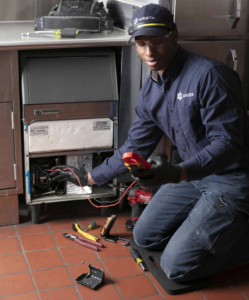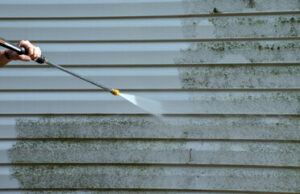Water Heater Repair Aurora CO can address problems such as a broken heating element, malfunctioning thermostat or plumbing connection issues. However, continued repairs may not offer good value if your water heater is nearing the end of its expected lifespan.
Licensed plumbers are trained to work with all aspects of water heaters, including piping and wires, heating elements, and gas lines. Water heater repair services provide the following benefits:

When your water heater makes loud noises or starts to leak, it may be time to call a professional. Licensed plumbers are trained to understand the components and tanks that make up your hot water heater, and can assess whether a repair or replacement is needed. They also have access to quality parts and materials at competitive prices, ensuring that any repairs made are cost-effective for the homeowner.
Many water heater issues can be fixed relatively inexpensively, such as a faulty thermostat or a pilot light that won’t stay lit. A leaking tank, on the other hand, can require more costly repairs or even replacement. If your water heater is more than 10 years old, it might be more economical to replace it with a newer model that can provide greater energy efficiency.
A puddle of water around your water heater indicates that it is leaking, which can cause water damage and mold growth if not addressed quickly. Leaks are typically not fixable, so a plumber will need to replace the unit.
Noisy water heaters are often caused by sediment build-up. If you notice popping or rumbling sounds, turn off your hot water heater and drain it by attaching an inner-threaded end of a garden hose to the temperature pressure relief valve at the bottom of the tank and then to a drain outside your home. Draining the tank helps reduce sediment accumulation, which can shorten its lifespan and lead to clogs.
A plumber’s labor costs are the most significant component of any Water Heater Repair cost, and vary depending on the location and technician’s experience. It is a good idea to compare price estimates from several plumbers and technicians before hiring them. This can help you determine the average Water Heater Repair cost in your area.
Warranty Protection
When purchasing appliances, such as a water heater, many homeowners are swayed by the offer of a warranty. While warranties are certainly convenient, it’s important to understand their limitations. A warranty will only provide protection when a product fails due to a manufacturing defect or other factors beyond your control.
When reviewing the terms of a warranty, pay close attention to its coverage timeframe, cost, and type of parts covered. You should also note any exclusions. Some common exclusions include sediment buildup damage, code violations, modifications, or environmental conditions.
Home warranties have evolved to meet the needs of consumers. Some plans are comprehensive and cover essentials like thermostats, heating elements, and gas valves. Others are more affordable and focus on less vital components. Knowing what your plan covers and does not cover can save you a lot of money in the long run.
Getting the most out of your water heater requires regular maintenance and timely repairs. However, as your water heater gets older and experiences more wear and tear, it may need to be replaced entirely. A water heater warranty can help you save money on a replacement by covering the cost of installation and labor.
Understanding what your water heater warranty covers will save you a lot of money in the future. If you’re not sure whether your system is protected, talk to a plumbing professional that can help you navigate the complicated language of warranties. They can determine whether your water heater is eligible for a warranty and what steps you need to take to get it covered. Then you can rest assured that if something goes wrong with your water heater, it will be covered by an expertly matched plan.
Accurate Diagnosis
Water heater problems often stem from a variety of sources. An experienced professional can accurately assess the situation and recommend solutions that resolve the problem. This process may involve assessing symptoms reported by homeowners and conducting inspections with the use of specialized tools like thermal imaging cameras and multimeters for continuity assessments. It may also include draining the tank systematically and removing sediment to prevent a buildup that interferes with heating elements.
Insufficient Hot Water
Having insufficient hot water is an indication that the unit’s heating elements are failing. These components corrode over time and can cause numerous problems, including inconsistent water temperatures, increased energy consumption, and higher utility bills. It’s important to have these issues addressed immediately by a trained technician.
Insufficient hot water could also be the result of a broken thermocouple or faulty gas control valve. A trained plumber can troubleshoot these issues to ensure your water heater is working safely and efficiently.
Discolored or Smelly Water
If you notice a strange smell or discoloration in your water, it’s likely due to the presence of hydrogen gas in your water supply. This is a common occurrence with well water and can be caused by your gas water heater or other factors, such as plumbing leaks. This is a sign that it’s necessary to increase your water temperature to 140 degrees and install thermostatic mixing valves at each point of use.
A leaking water heater requires immediate attention. Leaks may occur from a cracked tank, faulty pressure relief valve, or loose inlet or outlet pipes. To prevent future leaks, it’s recommended that you have your plumber flush your tank annually and replace the anode rod every few years.
Safety
If you’re planning to repair your water heater yourself, it’s important that you take the proper safety precautions. This will help to minimize the risk of fire or other hazardous conditions during the repair process. To begin with, make sure that the gas and power supply are turned off. You should also drain the tank to avoid sediment buildup or pressure problems. Additionally, you should use a non-contact voltage tester to ensure that all wires are completely disconnected from the water heater’s electrical system.
Next, choose a fire-resistant work area that’s away from any flammable materials. Be sure to keep a fire extinguisher nearby and familiarize yourself with its proper usage. Also, keep children and pets away from the work area to prevent accidents.
Water heaters have many important functions, including providing hot water for your daily routine. However, they can be dangerous to operate if they’re not properly maintained. Water Heater Repair can help you understand common problems and safely repair them yourself, saving you money in the long run.
If your water is ice-cold or just lukewarm, it could mean that your heating element has failed. In electric water heaters, a broken element can interfere with the thermostat’s signal and prevent it from heating up the water. The solution is to replace the broken one with a new one of the same wattage. In gas water heaters, a malfunctioning pilot light or an igniter can also cause the heater not to heat. In such cases, you’ll need to replace the burner assembly. Be sure to follow the manufacturer’s instructions carefully when accessing the burner. You may need to remove an access panel or loosen a screw to gain access.
Peace of Mind
A malfunctioning water heater can be a major headache. It can cause flooding and serious damage to your home’s plumbing, furniture, and belongings. It can also lead to scalding and other safety hazards. It is therefore essential to repair the problem promptly. Professional plumbers will diagnose the issue and perform repairs in a quick and efficient manner.
They can save you money in the long run. Unrepaired problems can result in high energy bills, whereas timely repairs improve the water heater’s efficiency. This results in lower utility expenses and a greener lifestyle.
A licensed plumber will have the right tools and training to ensure that your water heater is properly maintained. They can clean the tank and perform other tasks that improve the performance of your water heater. This will prevent them from deteriorating quickly and minimize future problems. You can try to carry out some of these tasks on your own, but they are better left to the professionals.
In addition to reducing repair costs, consistent maintenance can extend the lifespan of your water heater. A well-maintained water heater can last up to 10 years longer than an unmaintained one. The regular cleaning and inspection services that a licensed professional provides help to identify minor issues before they escalate into major problems.
Local water heater repair companies offer personalized service and are familiar with the specific types of hot water heaters commonly used in your area. They are also more likely to provide quick response times and offer affordable rates compared to national repair companies. Moreover, they can be more helpful when it comes to warranty protection. This is because most manufacturers’ warranties are only valid when repairs are performed by a licensed professional.








